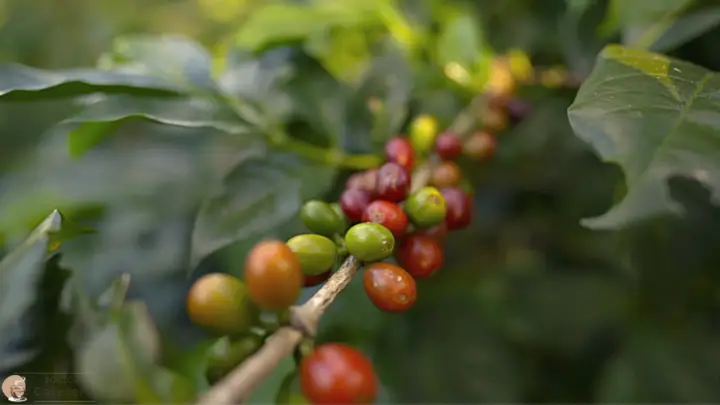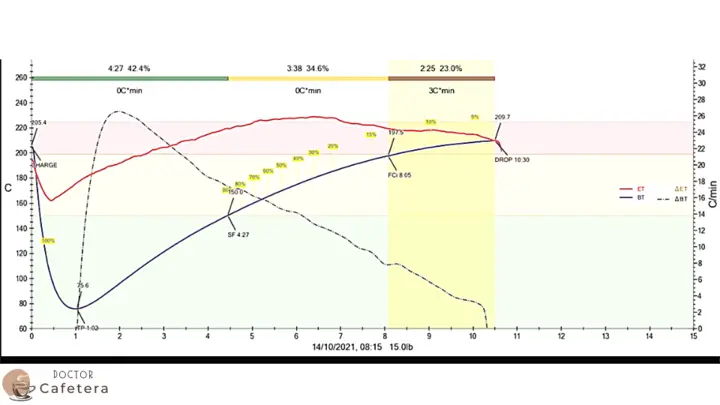Many doubts can arise for those entering the world of coffee and learning about the whole roasting process. Below you will find the most frequently asked questions about coffee roasting and their respective answers:
Is the water temperature used to make coffee linked to the roasting?
If we use a very high temperature for a coffee with a high roast, we will over-extract it very easily. Therefore, yes. The higher the roast, the lower the water temperature should be.
Remember that we do not want to dissolve all the compounds of the coffee in the water; therefore, the temperature of the water should be adjusted to the type of roast of the coffee bean we are going to use.
Can roasting ruin a good coffee bean?
Yes, the roasting of the coffee is a very important part of the coffee we will consume.
If we have an exceptional coffee that has had a lot of work on the farm to achieve that quality and falls into the hands of a not-so-good roaster, it will ruin everything that this coffee could have produced. The result can be a coffee that is unpalatable or with no flavor at all.
So before buying coffee beans, research how they have been roasted or buy them from a reputable establishment.
Is only high-altitude coffee beans good?
Not necessarily; it will depend on the personal taste of each individual.
Good quality can be achieved with a lower altitude coffee, so altitude is not a factor determining if a coffee bean is good or bad; it depends on each individual’s taste. I like high-altitude coffees very much.
What does the scoring of the coffee beans consist of?
The scores come from the producing farms. They must be endorsed by a certified Q grader, the professional evaluating the green and roasted coffee.
When you buy a coffee, the farm, the producer, or the importer must provide you with the technical data sheet of that coffee and the certificates of the evaluation of the cupping signed by that Q grader. However, coffee can have a very high score, but if it is not well roasted, the final coffee can be of low quality.
What is a roasting curve, and how is it determined?
It is a graph that indicates the time on the horizontal axis, the temperature on the left vertical axis, and the amount of heat being given per minute to the beans on the right.
This is basically what we have to monitor during roasting to keep track of all the variables. The process is similar to when we prepare an espresso, modifying the variables to obtain the best possible result; for this, we will use a scale and a timer, which give us accurate data.
Depending on the adjustments and changes we make during roasting, these curves will change, allowing us to modify or repeat the process. Just as each coffee has its ideal espresso recipe, each coffee bean has its ideal roasting curve.
Why is it that almost nobody sells coffee beans with a light roast?
This is being presented more and more all over the world, but if we go back in history, we have years and years of consuming dark roasts. In general, many people still prefer that, especially those who consume commercial coffee.
With the new waves of coffee, where a better quality is sought, people are opting for light roasts, where the characteristics of this good coffee can be seen and highlighted.
It is much easier to roast a coffee with an acceptable high roast than with a light roast and to do it well. It isn’t easy to have the right development, so many people try to roast it but do not achieve a good result.
Can a coffee with a light roast be roasted again?
That is why I also say it is more difficult to roast a light roast. You only have one chance, and if you put it back in the roaster, it is like reheating a cup of coffee in the microwave; it goes off, and we lose the clarity and brightness of the flavors.
What should I consider when planning a roast?
There are many things to take into account when roasting a coffee:
- The origin of the beans
- The height of the beans
- How dense the beans are
- Size of the beans
- What is the benefit of the coffee,
- Is it washed, natural, or honey?
- The humidity of the beans,
- The temperature of the environment
- Etc.
These things define the parameters and adjustments we will make during roasting.
With the experience of a good roaster, we can have a base profile that we predict will work for that coffee, depending on these parameters. Then the coffee is tasted, and the profile is modified to arrive at the best possible result.
How do you obtain lighter roasted coffee?
Many think roasting lighter means simply roasting the coffee beans for less time. That is why there are also so many failed attempts with light roasting. Each type of roast requires different parameters, be it light, medium, or high.
If I approach a medium roast, for example, I already know that there are things that I will modify from the start compared to a light roast. The same coffee with a light roast can have thousands of different profiles that lead to that color because with these words, we are referring to the final color of the bean to use it as a reference.
At what temperature is the coffee roasted?
The exact number will depend on a few things, such as the type of roaster you have and the amount of coffee you will roast. But in general, to say a range, it can go from 180 to 220 degrees Celsius at a fairly high temperature.
After roasting, when is the best moment to enjoy coffee?
The roasting process generates a lot of gas, mostly carbon dioxide. That is why we have to let it degas before consuming it.
If you use an immersion method such as the French press or Aeropress, you can start drinking it the following day. With a drip method such as the Chemex or Hario V60, in a minimum of 3 to 5 days, you can start enjoying it.
And with percolation methods such as an espresso machine or Moka, I recommend waiting longer, ideally at least 10 to 15 days.
With light roasts, this is even longer; after a month, we can notice a change where at some point, it will have the maximum peak of flavor, and it will last much longer than a high roast.
What is the ideal type of roast for the different coffee makers?
This will depend a lot on your taste based on the roast. With each type of roast, it is possible to make coffee in all methods, from espresso to V60, Chemex, or Moka Pot. But in each one, something different will stand out, which will depend more than anything else on the type of roast.
For example, I like a light roast coffee for filtered and espresso without milk, and a medium roast coffee for espresso with milk, as for a cappuccino.
You may be interested in:


